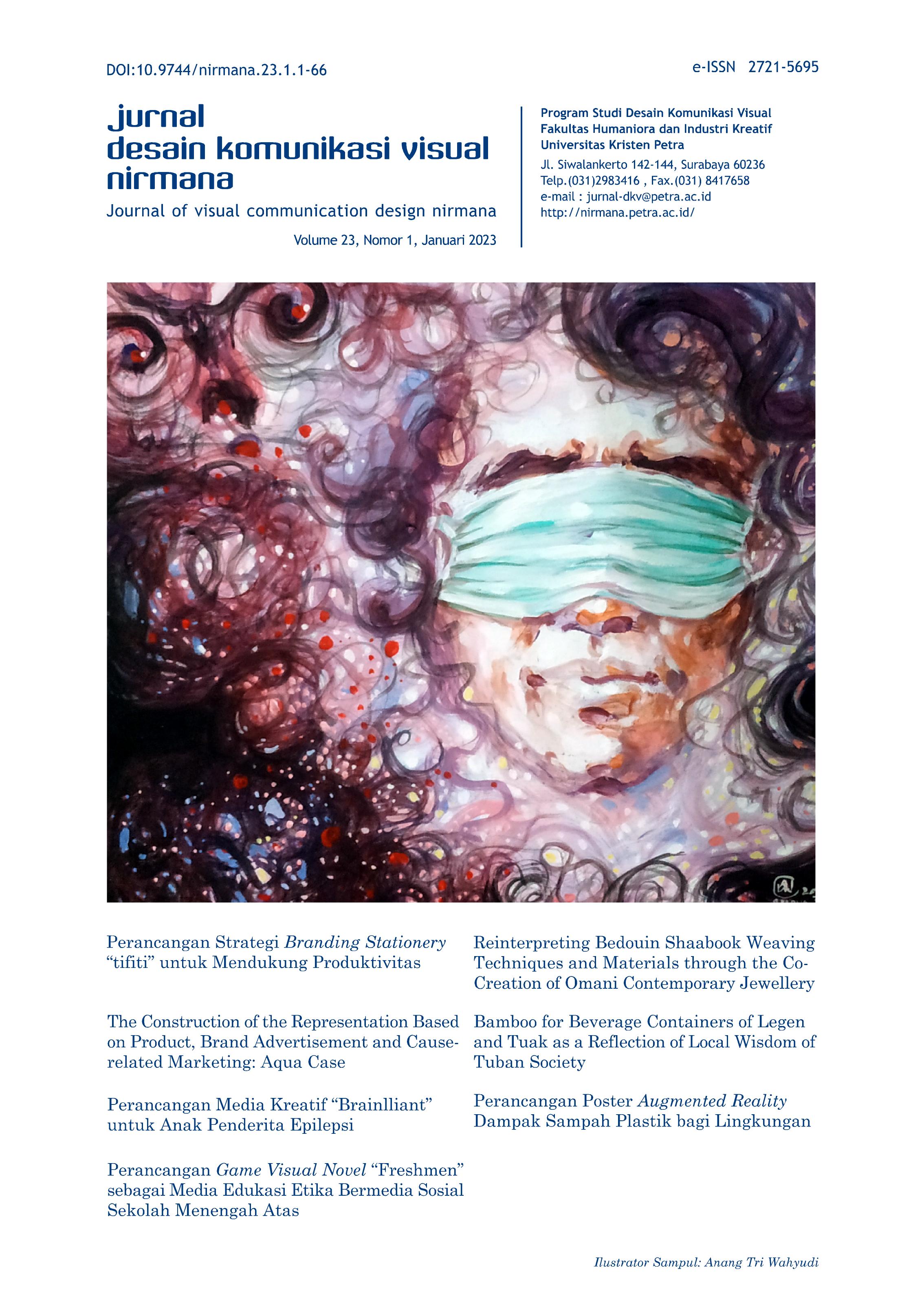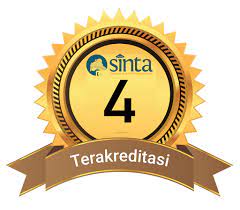Reinterpreting Bedouin Shaabook Weaving Techniques and Materials through the Co-Creation of Omani Contemporary Jewellery
 :
:
https://doi.org/10.9744/nirmana.23.1.40-49
Keywords:
Oman, identity, Bedouin, Shaabook, contemporary jewelleryAbstract
The goal of this practice-based research is to create new interpretations of traditional Omani Bedouin crafts to inform the creation of contemporary jewellery. According to observations made during fieldwork with settled Bedouin craftspeople, traditional Bedouin methods for tanning leather (using plant materials such as Galqa and Qarat) and the production of leather thread for weaving are described, as is the use of weaving techniques in the production of Shaabook (headpieces), Hebla (leather belts), and traditional homemade decorative trims (Talli, Siim, and Suffah). A collaborative/co-creation workshop with a group of settled Omani Bedouin in North Eastern Oman served as the basis for this research. Participants in the workshop had a variety of traditional weaving techniques under their belts. Working in teams, the participants wove modular elements that were then combined to form a neckpiece. Using reflective analysis, the issue of hybridity is investigated in order to establish a link between the past and the present in the creation of contemporary Omani jewellery pieces.
References
Al-Zadjali, Z. (2009). The investigation of hand woven products and motifs in the sultanate of Oman in order to rejuvenate a local market. Dissertation Heriot-Watt University School of Textiles and Design, UK.
Brunner, M. (2016). Aspects of Co-Creation in Creative Work¬shops.
Forster, A. (1998). Disappearing treasures of Oman: A fascinating story and illustrated guide to recognising, buying and restoring antique Bedouin artefacts. 1st ed, Clevedon: Archway.
Harper, D. (2002). Talking about pictures: A case for photo elicitation. Visual Studies, 17(1), 13-26.
Hawley, R. (2000). Silver: The traditional art of Oman. London: Longman.
Helkkula, A., Kelleher, C., & Pihlström, M. (2012). Characterizing value as an experience: implications for service researchers and managers. Journal of Service Research, 15(1), 59-75.
Luc Godard, J. (2017). Jean-Luc Godard > Quotes > Quotable Quote. Retrieved from
http://www.goodreads.com/quotes/347637-it-s-not-where-you-take-things-from-it-s-where
Mongiatti, A., Suleman, F., & Meeks, N. (2011). Beauty and belief: the endangered tradition of Omani silver jewellery. British Museum technical research bulletin, 5(1), 1-14.
Morris, M., & Shelton, P. (1997). Oman Adorned a portrait in silver. Saleh bin Mohammed Tallib Al-Zakwani.
Perry, J. (2013). Traditional jewellery in Nineteenth-century Europe. 1st ed. V & A.
Prahalad, C. K., & Ramaswamy, V. (2004). Co-creation experiences: the next practice in value creation. Journal of Interactive Marketing, 18 (3), 5-14.
Rajab, J. S. (1997). Silver jewellery of Oman. Kuwait: Tareq Rajab Museum.
Richardson, N., Dorr, M., & Omani Craft Heritage Documentation Project (2003). The craft heritage of Oman. London, Omani Craft Heritage Documentation Project.
Ross, H. (1978). The art of Bedouin Jewellery in Saudi Arabia. 1st ed. London: Stacey International.
Scholz, F. (1982). Bedouin and the oil economy. Commission on nomadic.
Wallace, J., Dearden, A., & Fisher, T. (2007). The significant other: The value of jewellery in the conception, design and experience of body focused digital devices. AI & SOCIETY, 22(1), 53-62.
Downloads
Published
How to Cite
Issue
Section
License
- Jurnal Desain Komunikasi Visual Nirmana has the right of first publication while the author(s) retains copyright and the right to share and redistribute the work under a Creative Commons Attribution License. This license allows others to freely share and adapt the work, provided that they acknowledge the work's authorship and its initial publication in this journal.
- Upon publication, the author(s) agrees to the journal's terms of non-exclusive distribution, allowing the published version of the work to be used in other contexts (e.g., institutional repository or a book), with an acknowledgment of its initial publication in Jurnal Desain Komunikasi Visual Nirmana.
- The author(s) is also aware of the responsibility to obtain permission for the use of any copyrighted material from third parties as required by the journal.















